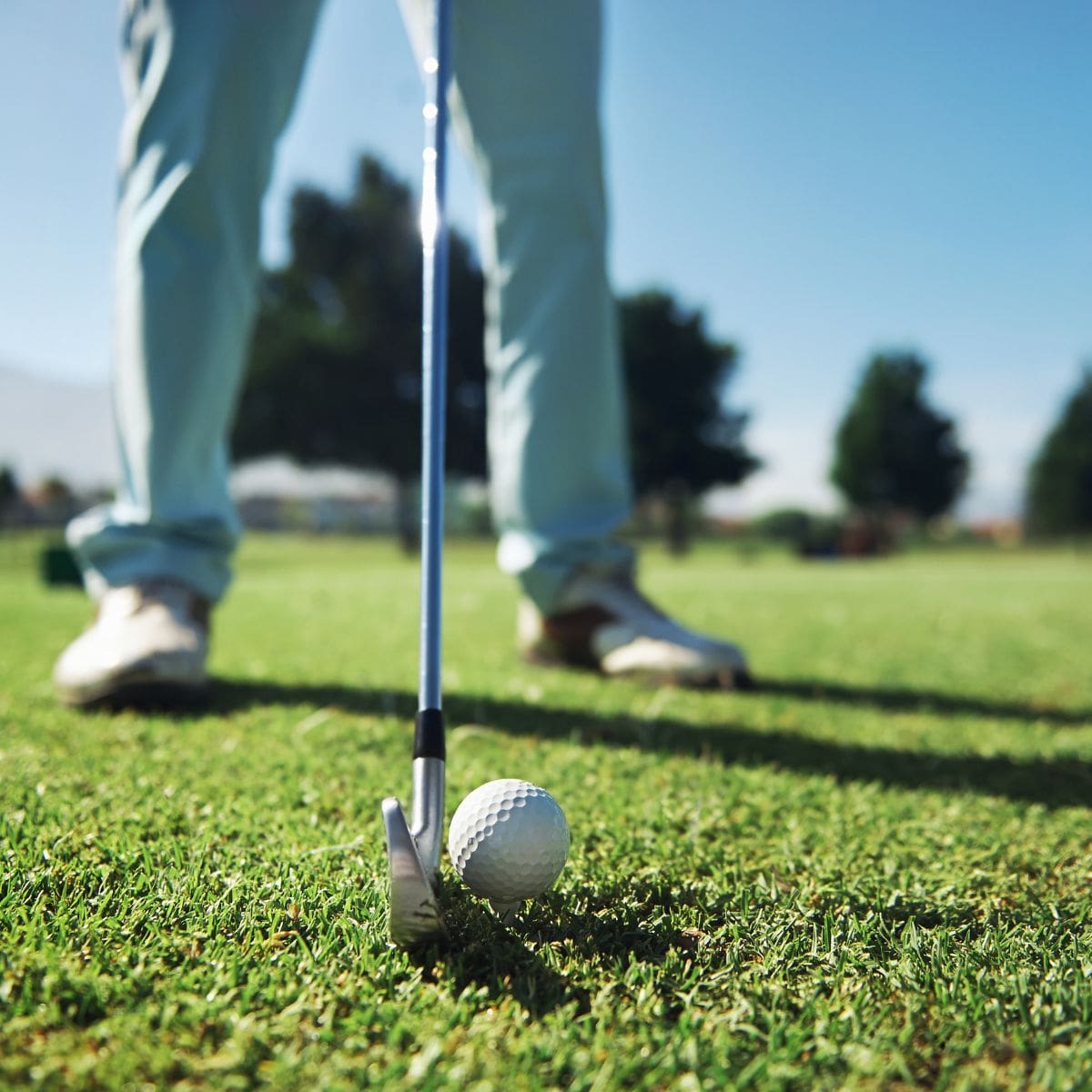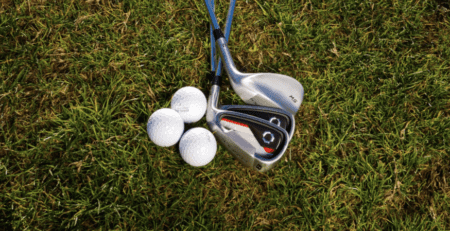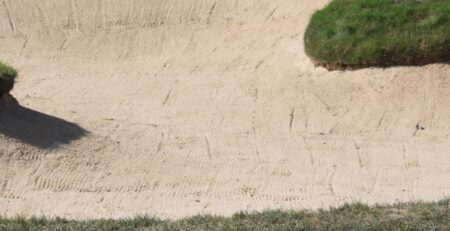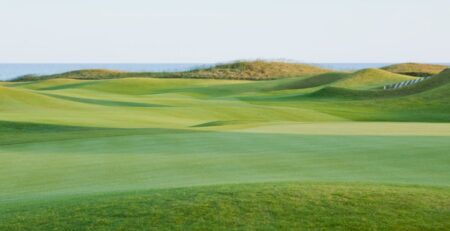Tips for Choosing the Right Club for Every Shot
When it comes to playing golf, many factors contribute to achieving optimal performance on the course. From honing your swing mechanics to mastering course management, there’s no shortage of elements to consider.
However, one aspect that often goes overlooked but holds tremendous significance is proper club selection. Choosing the right club for each shot is not only crucial for executing the desired distance and accuracy but also plays a vital role in shaping your overall performance and enjoyment of the game.
One of the primary benefits of proper club selection is optimising distance control. By selecting the appropriate club for a specific shot, you can effectively gauge the required power and loft to achieve the desired distance. Using a club with the right amount of loft can help you control the trajectory of the ball, allowing it to land softly on the green or carry over hazards with precision.
Accuracy is another crucial aspect influenced by proper club selection. Different clubs have different forgiveness levels, and selecting the club that suits your skill level and swing consistency can lead to more accurate shots. For instance, using a forgiving club with a larger sweet spot can minimise the effects of off-centre hits, resulting in shots that find their target more consistently.
The Different Types of Golf Clubs: Understanding Their Unique Characteristics and Purposes
Understanding the different types of golf clubs, their unique characteristics, and their intended purposes is essential for any golfer looking to excel in their game.
Drivers:
Characteristics: The driver is the longest club in a golfer’s bag, typically featuring a large clubhead and long shaft.
Purpose: Designed for tee shots, the driver is built to maximise distance and launch the ball off the tee with minimal loft.
Woods:
Characteristics: Woods are typically numbered from 3 to 5, with a larger clubhead than irons and a lower loft.
Purpose: Woods are primarily used for long shots from the fairway or rough, offering a combination of distance and forgiveness.
Hybrids:
Characteristics: Hybrids are a blend of irons and woods, featuring a smaller clubhead than woods but larger than irons.
Purpose: Hybrids are versatile clubs designed to replace long irons and help golfers achieve higher launch and better forgiveness.
Irons:
Characteristics: Irons come in various numbers (e.g., 3-iron to 9-iron) and feature smaller clubheads with angled faces (grooves).
Purpose: Irons are used for a range of shots, including approach shots to the green, fairway shots, and shots from the rough.
Wedges:
Characteristics: Wedges have higher lofts and specialised designs for precise control and accuracy.
Purpose: Wedges are used for shorter shots around the green, such as pitching, chipping, and bunker shots, where precision and spin control are crucial.
Putters:
Characteristics: Putters have a flat clubhead and are specifically designed for rolling the ball on the green.
Purpose: Putters are used for the final strokes on the green, with a focus on accuracy, feel, and distance control to sink the ball into the hole.
Club Selection in Terms of Distance and Shot Objective: Considerations for Different Golf Shots
Whether it’s a tee shot, fairway shot, approach shot, or shot around the green, understanding the considerations for each type of shot can greatly impact the outcome of your game.
- Tee Shots: When standing on the tee box, selecting the appropriate club sets the tone for the hole. Consider the following factors when choosing a club for tee shots:
- Distance: Evaluate the length of the hole and the desired landing area. A longer par-4 or par-5 may require a driver or fairway wood to maximise distance off the tee.
- Accuracy: Assess the width of the fairway and any hazards or trouble areas that need to be avoided. If accuracy is paramount, a more forgiving club, such as a hybrid or long iron, may be a better choice than a driver.
- Fairway Shots: Approaching the green from the fairway requires precision and control. Take the following considerations into account when selecting a club for fairway shots:
- Distance and Green Positioning: Evaluate the remaining distance to the green and the desired landing position. Select a club that can achieve the required distance while considering any obstacles or hazards that need to be cleared.
- Shot Shape: Assess the shape of the shot you want to execute. Depending on the hole layout and pin position, you may need to shape the ball left or right. Select a club that allows you to execute the desired shot shape effectively.
- Approach Shots: Approach shots play a crucial role in setting up scoring opportunities. Consider the following factors when choosing a club for approach shots:
- Distance and Elevation: Determine the distance to the pin and consider any elevation changes. Adjust your club selection accordingly, taking into account the need to carry the ball to the target and control the trajectory.
- Green Conditions: Evaluate the firmness of the green and the potential for roll-out. Select a club that allows for optimal control and spin to hold the green or adjust for anticipated roll-out.
- Shots Around the Green: Scoring well often depends on your ability to execute shots around the green effectively. Consider the following factors when selecting a club for shots around the green:
- Lie and Fringe Conditions: Assess the lie of the ball and the condition of the fringe or rough surrounding the green. Choose a club that enables you to effectively navigate the conditions and control the distance and trajectory of the shot.
- Shot Objective: Determine the shot objective, whether it’s a chip, pitch, flop, or bunker shot. Select a club that provides the necessary loft and control to execute the desired shot with precision.
Club Selection in Terms of Club Loft and Ball Flight: Impact on Trajectory, Distance, Shot Shape, and Spin
- Club loft plays a crucial role in determining the trajectory, distance, shot shape, and spin of a golf ball. Understanding how loft affects these aspects is essential for making informed club selections and optimising performance on the course. Let’s delve into the impact of club loft on various elements of ball flight.
- Trajectory:Club loft is a primary factor in determining the initial trajectory of the ball. Lower lofted clubs, such as drivers and fairway woods, produce a lower initial ball flight due to their reduced loft angles. This lower trajectory helps maximise distance off the tee or from the fairway. On the other hand, higher lofted clubs, such as wedges, produce a higher initial ball flight, allowing for increased control and stopping power on approach shots and shots around the green.
- Distance: Club loft also plays a significant role in distance. Lower lofted clubs generate more distance due to the reduced amount of backspin they impart on the ball. The lower backspin allows the ball to carry through the air with less resistance and roll out upon landing. Conversely, higher lofted clubs, such as wedges, generate more backspin, resulting in a higher ball flight and shorter overall distance. However, the increased backspin allows for greater control and precision on shorter shots.
- Shot Shape: Club loft can influence shot shape, particularly when it comes to shaping the ball left or right. Lower lofted clubs tend to promote a fade or a more right-to-left shot shape for right-handed players. This is because the lower loft reduces the club’s inherent loft-induced draw bias. On the other hand, higher lofted clubs can help promote a draw or a left-to-right shot shape due to their increased backspin and loft-induced draw tendencies.
- Ball Spin: Club loft significantly affects the amount of spin imparted on the golf ball. Lower lofted clubs produce less backspin, leading to a flatter and lower-spinning ball flight. This characteristic is desirable for maximising distance off the tee and on longer approach shots. Conversely, higher lofted clubs generate more backspin, which helps the ball hold the green on approach shots and shots around the green. The increased spin allows for greater control over the ball’s flight and stopping power upon landing.
Club Selection in Terms of Course Conditions and Hazards
Club selection is not only influenced by the desired distance or shot objective but also by the prevailing course conditions and potential hazards.
- Wind: Wind is a significant factor that affects shot trajectory and distance. When facing a headwind, selecting a club with slightly more loft can help counteract the wind’s resistance and ensure the ball carries the desired distance. Conversely, when playing with a tailwind, choosing a lower lofted club can help maximise distance while maintaining control. Crosswinds can require adjustments in shot alignment and club selection to compensate for the wind’s lateral effect on the ball.
- Slope: Course terrain often presents slopes and undulations that influence shot outcomes. Uphill slopes reduce the effective distance, requiring the use of a higher lofted club to achieve the desired distance. Conversely, downhill slopes increase the effective distance, necessitating a lower lofted club to avoid overshooting the target.
- Course Conditions: Course conditions can vary significantly, affecting the bounce and roll of the ball. Lush fairways and soft conditions may reduce roll-out, necessitating longer clubs for achieving the desired distance. In contrast, firm and fast conditions promote more roll-out, requiring careful consideration of club selection to avoid overshooting the target. Additionally, wet or soggy areas on the course may impact club selection, as the ball’s contact with damp ground can reduce distance and alter ball flight.
- Hazards: Course hazards, such as water hazards, bunkers, and dense rough, demand strategic club selection to avoid or navigate around them successfully. When facing a water hazard or lateral hazard, conservative club selection may be necessary to ensure a safe shot, even if it means sacrificing distance. Similarly, when encountering deep rough or challenging bunkers, selecting a higher lofted club can help elevate the ball quickly and clear the hazard effectively.
Club Selection in Terms of Assessing Your Abilities and Comfort Level
When it comes to selecting the right clubs for your golf game, it’s important to consider not only the technical aspects but also your own abilities and comfort level.
Skill Level:
Novice or beginner golfers may benefit from using more forgiving clubs with larger sweet spots, such as game improvement irons or hybrids. These clubs provide greater forgiveness on mishits and can help boost confidence and consistency.
Intermediate or advanced players may have a wider range of options, depending on their skill development and preferences. They may consider clubs that offer a balance of forgiveness and control, allowing them to shape shots and fine-tune their game.
Swing Speed:
With slower swing speeds may benefit from using clubs with higher lofts, as they help launch the ball higher and maximise carry distance. Conversely, golfers with faster swing speeds may opt for lower lofted clubs to control trajectory and maximise distance.
Understanding your swing speed can guide you in selecting the appropriate flex in your shafts. A shaft with the right flex allows for optimal energy transfer, leading to improved ball flight and distance.
Shot Preferences:
Consider your shot preferences and tendencies when choosing clubs. Some players may prefer a particular shot shape, such as a fade or draw, and may select clubs that facilitate those shots. Others may prioritise consistency and prefer clubs that promote a straight ball flight.
Additionally, consider the type of courses you play most frequently. If you regularly play on courses with tight fairways or significant hazards, choosing clubs that offer more forgiveness or better accuracy may be beneficial. Conversely, if you often play on wide-open courses, you may prioritise clubs that maximise distance.
Comfort and Confidence:
Comfort and confidence play significant roles in club selection. Feeling comfortable with a club’s appearance, weight, and overall feel can instil confidence in your swing. It’s essential to handle different clubs, test them during practice sessions, and identify the ones that feel most natural and comfortable to you.
Club Selection in Terms of Utilising Technology and Data
Advancements in golf technology have revolutionised the way golfers approach club selection. Utilising technology and data-driven insights can significantly enhance club fitting, improve performance, and optimise the overall golfing experience:
Golf Club Fitting
Golf club fitting is a process that involves analysing a golfer’s swing characteristics, body measurements, and performance metrics to determine the most suitable clubs for their game. By utilising advanced fitting techniques, such as launch monitors and fitting systems, club fitters can collect precise data to guide the club selection process.
The benefits of golf club fitting
- Customisation: Fitting ensures that clubs are tailored to individual swing characteristics, body type, and playing style. Customised clubs maximise performance and improve consistency, leading to better shot outcomes.
- Optimisation: Fitting helps optimise launch angle, spin rate, and ball speed, resulting in improved distance, accuracy, and overall ball flight. It allows golfers to achieve the ideal combination of launch conditions for their swing.
- Confidence: Custom-fit clubs instil confidence in golfers, knowing that their equipment is specifically designed to enhance their strengths and mitigate their weaknesses. This confidence positively impacts the mental game and overall performance.
- Launch Monitors: Launch monitors are sophisticated devices that use advanced sensors and algorithms to capture critical data about each shot. These devices measure various parameters, including clubhead speed, ball speed, launch angle, spin rate, and shot dispersion.
- Fitting Systems: Fitting systems are comprehensive tools that combine advanced technology, fitting expertise, and extensive data to guide club selection. These systems utilise a combination of launch monitors, swing analysis software, and fitting algorithms to recommend the most suitable clubs for an individual golfer.
- Swing Analysis: Swing analysis technology, such as video analysis software and motion-capture systems, helps golfers analyse their swing mechanics in detail. By studying swing sequences, positions, and movement patterns, golfers can identify areas for improvement and make more informed club selections.
Club Selection in Terms of Strategies for Practice and Experimentation
Developing an understanding of the capabilities and characteristics of different golf clubs is essential for effective club selection:
- Range Sessions: Regular practice sessions on the driving range provide an opportunity to explore the performance of different clubs. Start by hitting shots with each club in your bag, paying attention to the ball flight, distance, and consistency. Observe how the club interacts with the turf, the feeling upon impact, and the overall trajectory. This allows you to develop a sense of each club’s unique characteristics.
- Shot Shaping: Experimenting with shot shaping techniques is a valuable practice method for understanding the capabilities of your clubs. Attempt fades, draws, high shots, low shots, and various shot shapes with different clubs. This experimentation helps you comprehend how each club responds to adjustments in setup, swing path, and clubface position. By exploring shot shaping options, you gain insight into the club’s versatility and adaptability to different situations.
- On-Course Scenarios: Practicing club selection on the course is invaluable. Pay attention to various situations you encounter during a round, such as different distances, uphill or downhill lies, and tight or wide fairways. Experiment with different clubs to see how they perform in specific scenarios. Assess the results and learn from the experience to make more informed decisions in similar situations in the future.
- Simulation and Practice Games: Engaging in simulation and practice games allows you to simulate on-course situations and practice club selection under pressure. Create scenarios that replicate specific holes or challenges you commonly face. This practice method helps you evaluate different club options and develop a decision-making process based on your strengths and the demands of the situation. Through simulation and practice games, you can refine your club selection skills and build confidence in your decision-making abilities.
- Analyse Data and Track Progress: Utilise data-driven tools, such as launch monitors or shot tracking systems, to gather information about your shots. Analysing data helps you understand the performance of different clubs more objectively. Track key metrics such as distance, accuracy, and ball flight characteristics. By monitoring your progress over time, you can identify trends, strengths, and areas for improvement, which can inform future club selections.
Club Selection in Terms of Course Management and Shot Planning
Club selection plays a vital role in effective course management and shot planning. By carefully considering factors such as hole layout, distances, hazards, and green conditions, golfers can make strategic club choices that optimise their chances of success.
- Hole Layout and Strategy: When planning your shots, it’s crucial to evaluate the layout of the hole. Consider the distance, shape, and any potential challenges or hazards. Analyse the landing areas and identify optimal target areas that set up favourable approach shots. strategically and minimise risks.
- Distance Considerations: Accurate club selection based on distance is essential for executing shots effectively. Evaluate the total distance required to reach the target, considering factors such as wind, elevation changes, and course conditions. Take note of your typical carry distances with each club, factoring in any adjustments needed due to these variables.
- Hazards and Risk Assessment: Course management involves assessing the potential hazards on each hole and strategically selecting clubs to mitigate risks. Evaluate the presence of bunkers, water hazards, and out-of-bounds areas. Determine the best approach to avoid these hazards, whether it’s playing more conservatively with a club that offers better accuracy or taking a more aggressive line with a longer club.
- Green Conditions and Pin Placement: Green conditions and pin placement influence club selection for approach shots. Evaluate the firmness and speed of the greens to gauge how the ball will react upon landing. Consider the pin position, and select a club that allows you to control the distance and trajectory to reach the desired landing area around the pin. By adjusting your club selection based on green conditions and pin placement, you can improve your chances of hitting accurate and controllable approach shots.
- Shot Shape and Shot Types: Course management also involves considering shot shape and shot types when selecting clubs. Certain holes may require a specific shot shape, such as a fade or draw, to navigate around obstacles or position the ball favourably. Assess your shot-making abilities and identify clubs that enable you to execute the desired shot shapes effectively.
- Personal Comfort and Confidence: Club selection should also consider personal comfort and confidence. Selecting clubs that you feel comfortable with and have confidence in plays a significant role in executing shots effectively. Understand your strengths, weaknesses, and preferences, and choose clubs that align with your abilities and inspire confidence in your swing.
Mastering club selection is a crucial aspect of achieving success in golf. By implementing the tips and techniques discussed in this article, you can enhance your ability to choose the right club for every shot and optimise your performance on the course. Remember, club selection involves considering factors such as distance, shot objectives, course conditions, hazards, and personal abilities.











